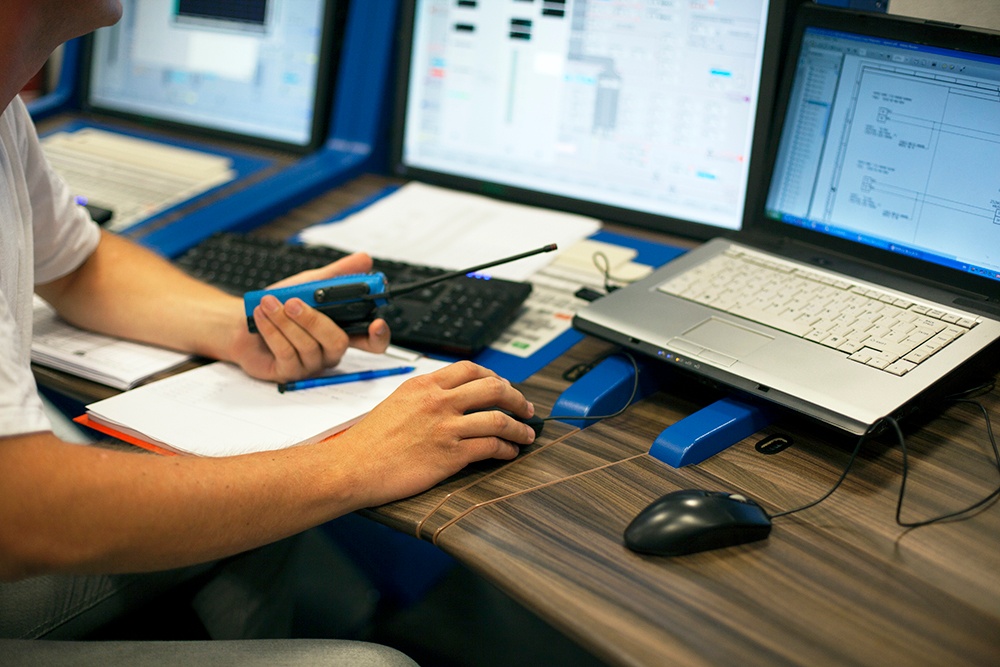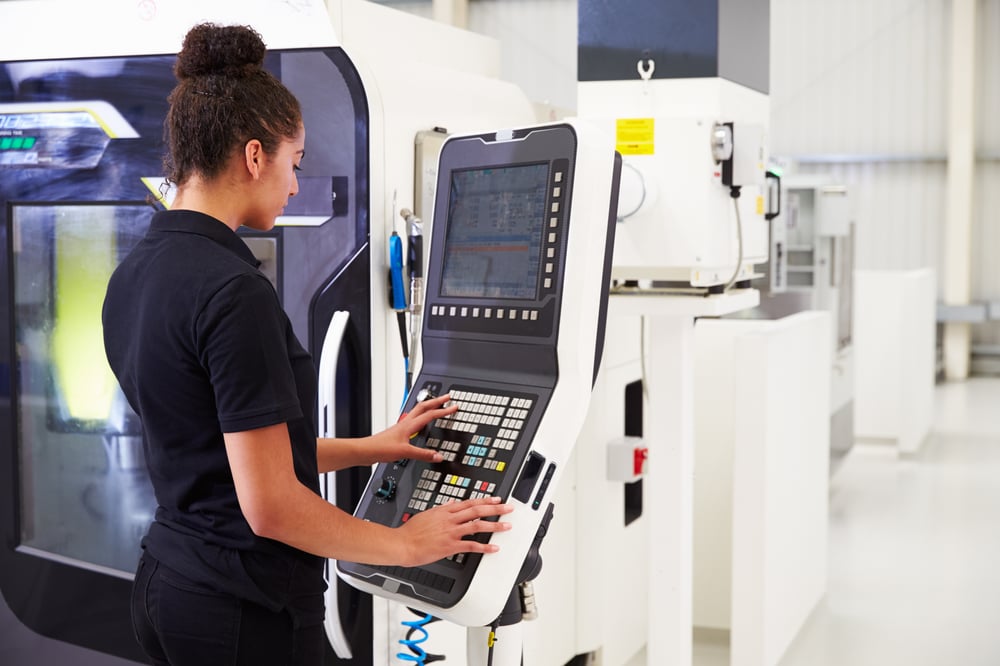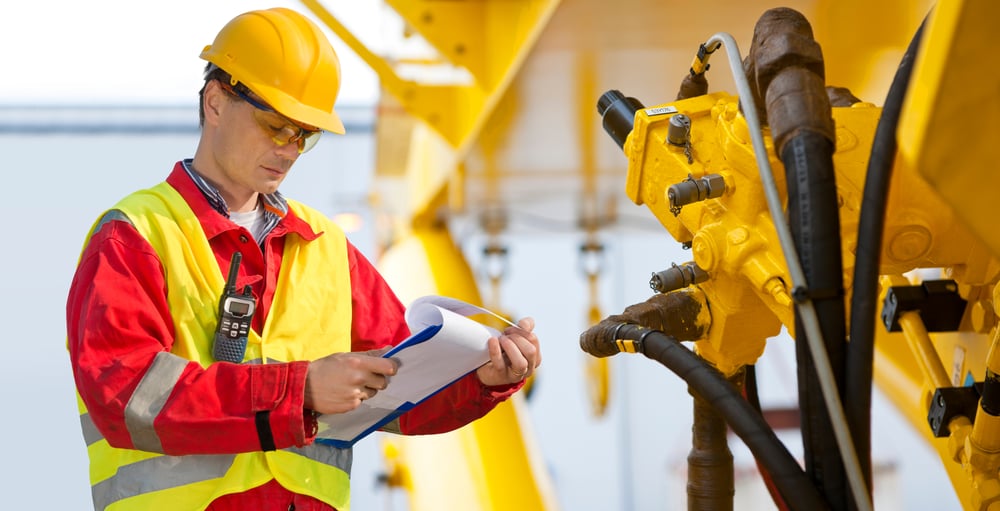Advances in modern technology have been crucial in introducing more sophisticated developments to the manufacturing sector, where industrial automation solutions have become increasingly significant to the overall success of individual businesses.
There is a multitude of benefits for a company to invest in the latest automated technology, however, despite this, it is currently estimated that a significant proportion of frontline workers in the UK do not feel fully equipped with the right technology to complete their job effectively. Many employers are failing to take advantage of automated technology.
As a result of this, companies may turn to simple commercial devices, such as smartphones, in an attempt to offer better communication solutions to their frontline workers. These may work for a good part of the employees, but they are not necessarily the right fit for everyone in a company, so a decision like this should not be taken lightly and more consideration should go towards the purpose and use of these devices.
Aside from communication devices, there are other aspects of a factory that can be massively improved through automation. In this competitive market anything that increases costs should be minimised. Things like production delays, material waste, defected products that need to be re-produced are all things that increases costs, and even a 1% annual decrease of these over a year can make a significant saving in a manufacturing company. Factories are already doing a lot in this remit in order to achieve this goal, but much more can be done. Additionally, with more automated machines and robots being added to the production process, there is an accentuated need for a factory to know in the shortest time possible when a machine has an issue, as failure to do so may greatly affect output and profit for the business.
There are of course different ways that teams can become aware of a faulty machine, pump or value within the production process. One is by an employee observing that a machine is faulty and relaying that to a team that need to fix it. Another way is by using sensory technology that monitors all the various components and machines and draw an operator’s attention to an issue in the way of an alarm. In both scenarios automating technology can help companies manage their critical alarms more effectively helping them to make significant saving across their production process.
In this article we will cover how to increase productivity and reduce costs in your manufacturing company by fully automating the critical alarm process and better equipping your workers with the right communication tools, and we also make some recommendations specifically around automation in ATEX environments.
What each organisation deems critical will vary from business to business. Essentially a critical alarm represents an emergency or event that must be dealt with immediately. Failing to do so could have serious ramifications that could lead to fines, additional costs and in some cases even unnecessary death of an employee. There are a number of critical alarms that can happen in a manufacturing business, some are highlighted below:
The main reasons why critical alarms are hard to manage in a manufacturing plant are that:
Before looking at what are and how you can automate critical alarm management systems, it is important to recognise why these are so important and how they differ from other alarm management solutions.
Companies will manage alarms in different ways, for example a small business may have several simple alarms that trigger a siren in the production area while a large manufacturing company may have a designated central control room and an alarm management system that monitors various systems throughout the production process.
Poorly designed alarm management systems have been responsible for an increase in the severity of major incidents. One frequently cited example is the Milford Haven oil refinery disaster of 1994 when staff were bombarded with numerous alarms for many hours before the actual event. More recently, big names such as South West Water, Tesco, Thames Water and Yorkshire Water have all been issued with huge fines (between £8m and £12m) for serious incidents where inadequate alarm management and poor processes had contributed to their failure to respond appropriately to emergencies. This even resulted in a fatality for South West Water, where a lone worker conducting routine maintenance was found dead after it took the company 90 minutes to respond to the alert.
Most alarm management systems rely on operators being able to manually escalate incidents to designated teams, which exposes the company to the risk of human error. Control centres in manufacturing companies are ridiculously busy, and commentators estimate that in particular in the oil, gas and chemicals companies, operators can expect to receive up to 1,500 alerts a day. This makes it particularly challenging to spot a critical alarm from a low level, routine alarm when the operators are already overloaded with alarm messages and have limited technical expertise or site knowledge to fully understand the implications of each issue. They have to be able to identify and prioritise these at a glance, then manually initiate the emergency procedures by contacting the corresponding response team. This can significantly delay the process and prolong the response time, which in some cases can be detrimental to the business from a production and financial point of view, or even fatal for an employee that has triggered a lone worker alarm. The worst-case scenario could see the complete destruction of a factory or plant.
Critical Alarm Management systems can be implemented by almost any company, although they are particularly valuable in industries with lone workers that operate in hazardous environments and businesses that rely on systems or equipment to operate continuously.
In general these systems help manage critical alarms by:
All the above result in quicker and more effective alarm responses, including:
Read more about automating critical alarms here
In today’s fast paced competitive market, time is a luxury that most people and businesses simple don’t have. Often employees will need to act to keep businesses moving forward. But how do employees arrive at those decisions, so they can make the right call and act in the interest of the business?
No doubt there are many determining factors, but information is certainly one. Information can come from all sorts of sources; from colleagues, suppliers and even online, with access available across different channels including phone, email, text and apps. Having access to valuable information means employees can make more informed ‘on-the-spot’ decisions, when action is required.
Therefore, for many frontline workers receiving up to date critical alarm information directly on their mobile device, isn’t a luxury it is a necessity. But companies also need to think beyond the alarm information and think about what happens next. How do staff manage the emergency, who do they need to call or involve, to resolve matters quickly? And question whether frontline workers have the necessary tools to do their job and act in the interest of the business – and make the right decisions every time.
Businesses can benefit from automated technology without having to overhaul end user devices, as in most cases critical alerts can be delivered to different mobile devices and platforms, commonly used within manufacturing companies. This can represent a significant saving especially for businesses that have recently refreshed employees’ mobile handsets.
That being said, certain devices will work better with the solution than others and it is always worth checking with a solution provider if you’re currently thinking of refreshing the mobile devices you currently provide your front line workers.
Many factors need to be considered including the worker’s role, environment, mobile reception and existing infrastructure to determine the most appropriate devices. Smartphones, for instance, aren’t always practical for teams that wear gloves, and most models aren’t robust or suitable in industrial areas. And though critical alarm apps are available for iPhones, you generally don’t get the full features you get with android smartphones.



ATEX zones are areas where there are likely to be hazardous explosive atmospheres and there can be lone workers that don’t have the support of colleagues nearby in the event of an accident. Therefore, to safeguard the health and well-being of your lone working employees, it is important to have robust and reliable processes whereby teams are automatically alerted and can respond directly the moment an incident occurs.
Similarly, any machine failure within an ATEX area could cause serious disruption if not fixed quickly. In this scenario, the moment the machine fails, an engineering team would be directly alerted on their ATEX mobile device, detailing what the machine is, the type of fault and its location. If a member accepts the alarm their colleagues would get updated that the incident is being dealt with and prevent further escalation messages from being triggered.
Standard mobile phones and other types of communication devices can emit sparks, making them unsafe to use in ATEX areas that can contain high levels of gas or dust, and therefore must be left outside the area. Furthermore, ATEX zones are often restricted areas, which means anyone working in them, may do so alone. This presents a major risk as if someone has an incident leaving them immobile, they would be unable to call for help without their mobile communication device.
A range of devices are available that are certified by ATEX. These devices are safe to use in ATEX zones that contain flammable gases or dust.
This means that staff can safely use their ATEX communication handsets throughout the site. It is also possible to provide handsets with lone worker functionality, such as a panic button and embedded tilt sensor. These can be easily used to trigger an alert that is automatically distributed directly to colleagues on their ATEX or non-ATEX mobile device, in the event of an accident. Colleagues can respond appropriately, helping the lone worker to quickly receive the right assistance without delay. In such situations, it's critical to ensure that all alarms are promptly acknowledged (which they can do directly on their handset), to prevent the incident from escalating and to ensure that the help always arrives quickly for the worker in need.
There are many types of automated technology, and whether to invest in it or not is something that depends on the individual requirements of your business. However, it should not be perceived as a cost, but as a way to improve the company’s margins and become more competitive in the market. When it comes to increasing productivity, efficiency and safety, automating your critical alarm processes is something that should be looked at as a priority.

